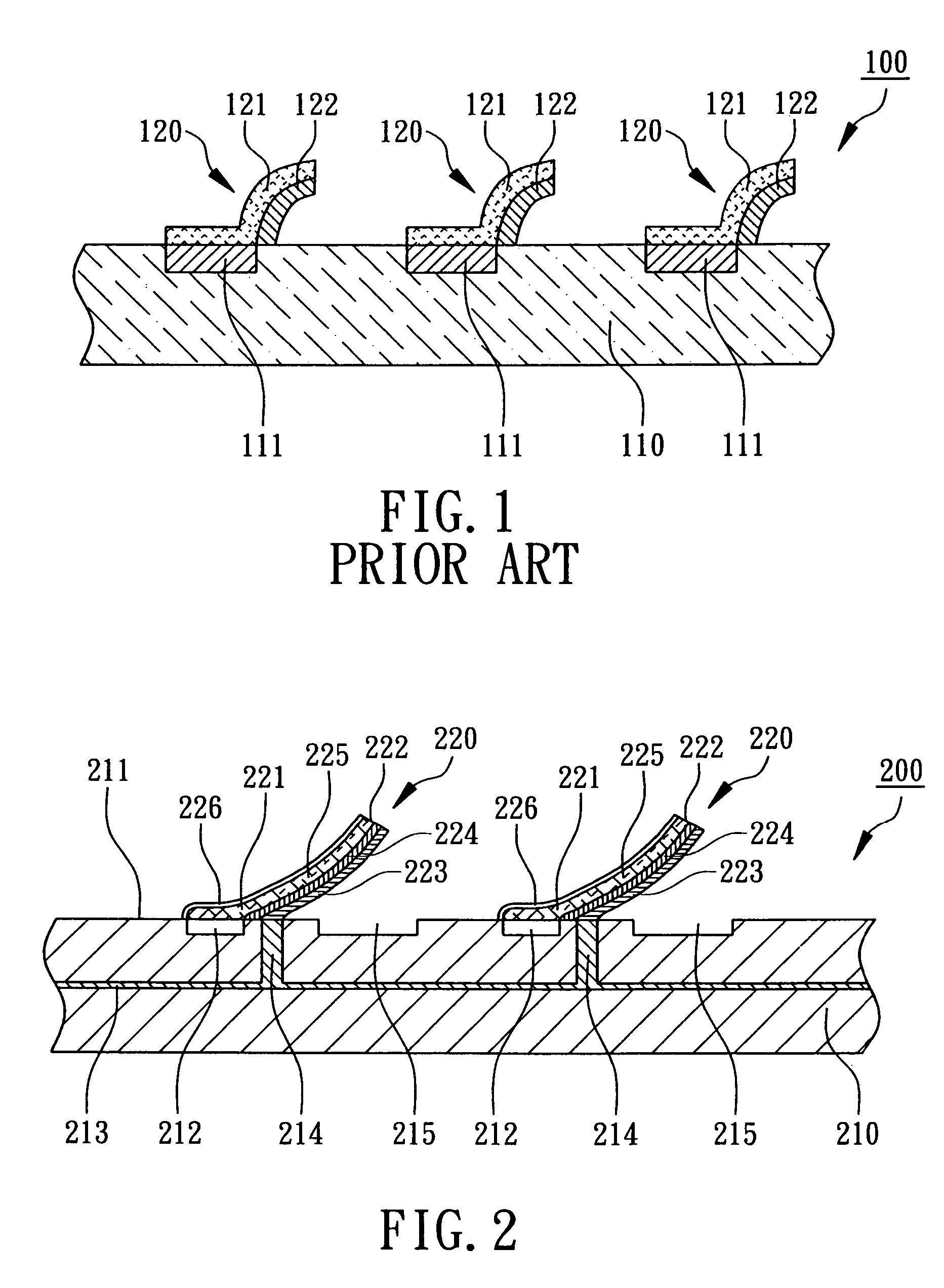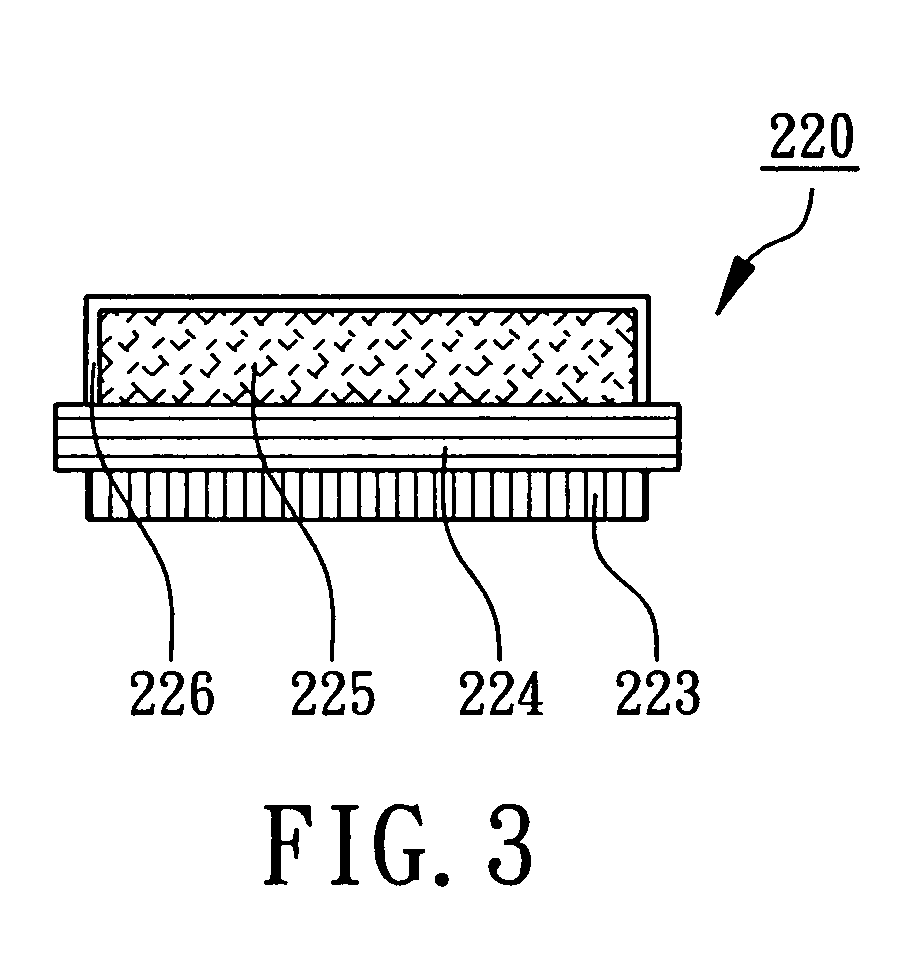Electronic device with a warped spring connector
a technology of electronic devices and connectors, applied in the direction of coupling device connections, semiconductor/solid-state device details, instruments, etc., can solve the problems of cross talk and electrical-magnetic interference between needle electrodes b>120/b>, not all the outer connections are reliable after long hours of operation, signal disconnections, etc., to achieve enhanced reliability of electronic devices 200, prevent metal oxidation and metal contamination, and more flexibility for stress absorption or buffering
- Summary
- Abstract
- Description
- Claims
- Application Information
AI Technical Summary
Benefits of technology
Problems solved by technology
Method used
Image
Examples
Embodiment Construction
[0010] Please refer to the attached drawings, the present invention will be described by means of an embodiment below.
[0011] Referring to FIG. 2, an electronic device according to a preferred embodiment of the present invention is described. The electronic device 200 comprises a substrate 210 and a plurality of warped spring connectors 220. The substrate 210 has a plurality of signal bonding pads 212 on its surface 211, a ground plane 213 in the substrate 210, and a plurality of vias 214. The substrate 210 is chosen from the group consisting of wafer, chip, wafer-level chip scale package (WLCSP), silicon substrate, ceramic substrate, glass substrate, and printed circuit board. The surface 211 may be an active surface with integrated circuits (IC) or a probing surface of a probe head of a probe card so that the electronic device 200 can be implemented in IC packaging as well as in IC testing.
[0012] Please refer to FIG. 2 and FIG. 3, the warped spring connectors 220 are disposed on ...
PUM
 Login to View More
Login to View More Abstract
Description
Claims
Application Information
 Login to View More
Login to View More - R&D
- Intellectual Property
- Life Sciences
- Materials
- Tech Scout
- Unparalleled Data Quality
- Higher Quality Content
- 60% Fewer Hallucinations
Browse by: Latest US Patents, China's latest patents, Technical Efficacy Thesaurus, Application Domain, Technology Topic, Popular Technical Reports.
© 2025 PatSnap. All rights reserved.Legal|Privacy policy|Modern Slavery Act Transparency Statement|Sitemap|About US| Contact US: help@patsnap.com



